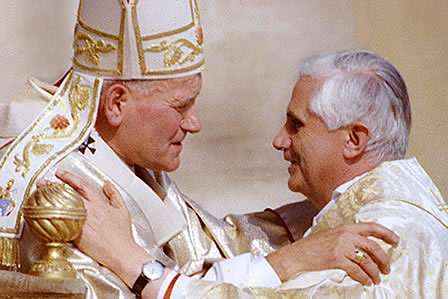ICONOGRAPHY
Jesus is an icon-He is the image of God. We are icons-we are called to be images of Jesus.Iconography is not just art; each icon speaks a truth.
KAIROS
The Sacrament of Iconography
Brother Aidan
I
Iconography extends roots into the past, but it also stretches out
branches into the present and future, for it is part of the
Church's mission to "preach the Gospel to the whole creation."
[Icons are becoming increasingly familiar to us in the West, but
quite often are assimilated to our own tradition of religious
images and pious portraits of the saints. What we urgently need to
understand is the spiritual tradition and what might be called the
ontological context, of iconography. Brother Aidan is a convert to
Orthodoxy from Evangelical Christianity. He has lived on Mount
Athos, and now lives at the Hermitage of Saint Antony and Cuthbert
near Shrewsbury in Shropshire, England. He was an artist in the
Western sense before he became a monk and iconographer; he is
therefore well able to understand the deep differences between the
two attitudes-the artistic individualism of the West with its
craving for novelty, and the deep contemplative spirit of the
iconographer, with its love of anonymity and continuity in a
still-living tradition of sacred art.-Stratford Caldecott]
"When the light becomes his pathway, the real man rises to eternal
heights; he contemplates metacosmic realities without being
separated from matter which has been part of his being from the
beginning. Through himself, man leads the whole creation to God."
(St. Gregory Palamas)
Real humans are small gods; in Christ they are corulers of the
universe. The universe is contained within man: when man falls,
all creation falls with him and in him; when man rises in Christ,
all creation rises, and sits with him in heavenly places. Man is
to the cosmos what his own heart is to his body; by him the
universe is offered as a hymn of praise to God, in the same way
that the saints offer to God their whole selves-body, soul and
spirit-upon the altar of their hearts. Through this transformation
and offering of the physical world (grapes are transformed into
wine, wheat into bread), man the makes the good very
good, the beautiful very beautiful. In his humility the great God
wished man to be his co-worker, and thus ordered the universe in
such a way that it needed man's priestly work, one means of the
Church redeeming and offering the material world. As such, icon
painting today, as in any other age, is to be something creative
and dynamic. It must certainly be guarded against stylistic
changes, such as sentimentalism and naturalism, which do not
correspond to the spiritual realities which icons represent. But
is must equally be guarded against a legalistic conservatism that
equates tradition with mindless copying. Today we are in danger
more of the latter than of the former. Iconography extends roots
into the past, but it also stretches out branches into the present
and future, for it is part of the Church's mission to "preach the
Gospel to the whole creation" (Mk 16:15).
Source: http://www.ewtn.com/library/HOMELIBR/SACICON.TXT
Icons Explained: http://www.iconsexplained.com/iec/iec_idb5s.htm



No comments:
Post a Comment